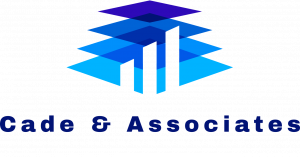Through meticulous planning, a correct Work in Progress (WIP) report, continuous monitoring, and strategic financial management, general contractors can navigate the bell curve challenges.”
— Jason Cade, Ph.D., MBA, CFE, CSOE, AAMS
OCEAN ISLE BEACH, NC, UNITED STATES, April 2, 2024 /EINPresswire.com/ -- General contractors face a unique set of challenges when it comes to managing building costs and cash flow. The nature of construction projects often follows a "bell curve" pattern, where expenses and cash outflows are minimal at the project's inception, increase significantly during the active construction phase, and then decrease as the project nears completion.
This pattern necessitates strategic financial planning and management to ensure the project's success and the contractor's financial stability. Cade & Associates' construction accountants & CFO experts delve into strategies for managing the bell curve in building costs and cash flow effectively.
Understanding the Bell Curve in Construction
The bell curve in construction projects is primarily driven by the project timeline and the associated costs at different stages. Initially, costs are low as the project involves planning, permits, and minor preliminary work. As the project progresses into active construction, costs escalate due to labor, materials, equipment, and subcontracting expenses. Finally, as the project wraps up, costs diminish, though final touches, landscaping, and administrative tasks can still incur significant expenses.
Cade & Associates construction CFO's build accurate Work in Progress (WIP) reports to ensure billing is managed closely to prevent cash flow issues created by the bell curve of construction costs.
Strategies for Managing Building Costs
1. Detailed Project Planning and Budgeting: Before breaking ground, conduct thorough planning and budgeting. Use historical data and current market prices to forecast costs accurately. A contingency budget is also crucial to cover unexpected expenses without derailing the project.
2. Continuous Cost Monitoring: Implement a system for real-time cost tracking against the budget. This allows for immediate identification of budget overruns and enables corrective actions to be taken promptly.
3. Efficient Procurement and Inventory Management: Bulk purchasing and early procurement of materials can lock in prices and avoid cost escalations. Efficient inventory management ensures materials are used judiciously, reducing waste and theft.
4. Use of Technology: Leveraging construction management software can streamline project management, budgeting, scheduling, and cost control, providing a comprehensive view of the project's financial health.
Strategies for Managing Cash Flow
1. Staged Financing and Payments: Structure contracts to include staged payments that align with project milestones. This ensures a steady inflow of cash to cover costs as they arise. Additionally, securing a line of credit can provide a buffer for cash flow shortfalls.
2. Prompt Invoicing and Efficient Receivables Management: Ensure invoices are issued promptly upon completion of milestones, and follow up diligently on receivables to minimize delays in payments.
3. Cost Control and Delay Mitigation: Actively manage costs and project timelines to avoid delays, which can significantly impact cash flow. Implementing lean construction techniques can enhance efficiency and reduce waste.
4. Subcontractor and Supplier Management: Develop strong relationships with subcontractors and suppliers. Negotiate favorable payment terms and ensure they adhere to project timelines to prevent delays and additional costs.
Conclusion
Managing the bell curve in building costs and cash flow is critical for the success of construction projects. Dr. Jason Cade, Founder of Cade & Associates, stated through meticulous planning, a correct Work in Progress (WIP) report, continuous monitoring, and strategic financial management, general contractors can navigate the challenges presented by the bell curve. Embracing technology and fostering strong relationships with project stakeholders further enhances the ability to manage costs and cash flow effectively, ensuring project profitability and contractor financial stability. Cade & Associates work with General Contractors across the US and has offices located in NC, SC, & IN.
Dr. Jason Cade, Ph.D., MBA, CFE, CSOE, AAMS
Cade & Associates
info@cadeaccounting.com
Visit us on social media:
LinkedIn
![]()


